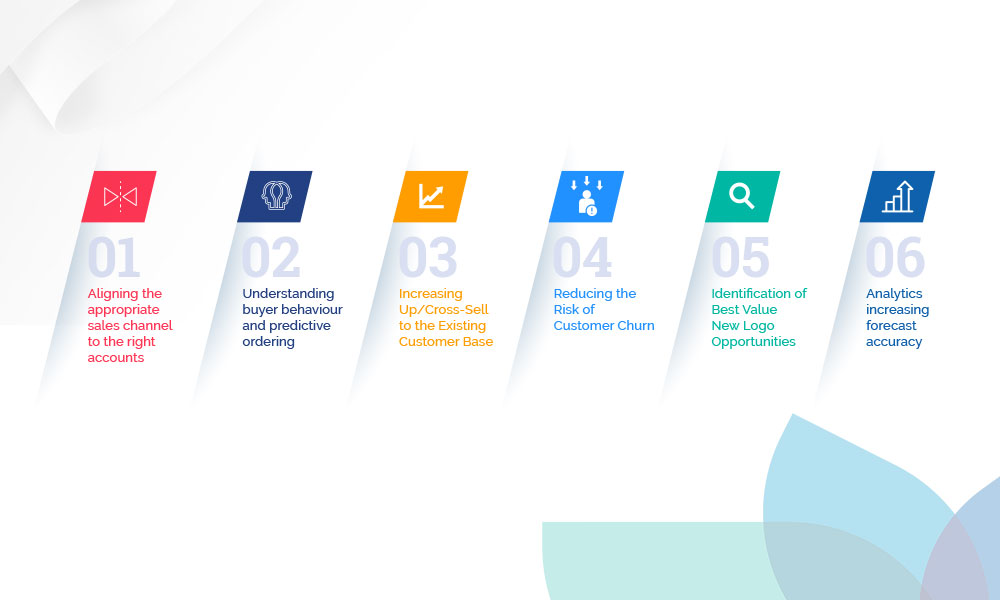The most successful sales growth organisations are those that are finding methods to drive greater certainty into their business through data. When you align data science and sales operations together, you can leverage key impact areas that contribute to driving profitable growth.
Sales operations leaders continue to have a major impact on the overall performance of salespeople as they provide insights and direction on where the best sales results can be achieved with the least effort. They are the sales team’s planning arm and are responsible for providing actionable insights with predictable results.
Successful sales growth companies have, in the last two years, evolved the role of sales operations from someone recording information and documenting trends to a function of forecasting and predictability through customer buying insights and market impacts.
Through the last two years of rapidly changing markets and buying patterns, historic information became less valuable, and an eye into the future was on everyone’s agenda. They have been asking questions of ‘Where is the market shifting, and how do we stay with it?’ ‘What customers will we retain, and where are new customers coming from to support growth?’ ‘How do we identify it?
The marketing department is also looking for answers to those questions as communication plans, and marketing campaigns are being planned.
Sales ops must lead and answer those questions with actionable, quantifiable insights that can be utilised in business strategy and revenue-generating teams.
Organisations placing a data-driven strategy at the core of their planning can positively impact the top line in growth and profitability. Sales operations teams that can effectively drive data insights into a strategy can be the catalyst required to realise more significant results. The question is, ‘How do sales operations do it?’
The answer is partnering with companies like Tableau or Qlik to disseminate business data and gain insights needed to deliver greater predictability to revenue growth. As a result, sales operations can deliver positive impact insights like never before to their revenue-generating teams.
Sales Operations and Data Science Alignment examines the key factors that will have the most positive and direct impact on the business. They are:

1. Aligning the appropriate sales channel to the right accounts: With the changes in the market and the upturn in online purchasing, buyer behaviour has changed. Customers have become accustomed to purchasing without the assistance of salespeople, and the emergence of online channels needs to be exploited where possible. Companies operating multiple sales channels need to understand their customer’s preferences for purchasing and guide them to the channel that best suits them. Companies can no longer survive on a single channel to market.
2. Understanding buyer behaviour and predictive ordering: Data science can provide insights into customers who have a cycle or trend to their ordering. A cycle can be based on usage rates of consumables, budgeting periods, production schedules, or other factors. These insights provide marketing with an understanding of nurturing campaign timelines for customer segments and salespeople with the insights to know when to engage with customers to stimulate sales and ensure they are not annoying customers at the wrong times.
3. Increasing Up/Cross-Sell to the Existing Customer Base: Most companies have a variety of products and solutions to position to their existing customer base, whether it is to land or expand those items. Unfortunately, the timing of those product and service introductions often being left for sales departments to manage.
However, data-driven insights on which product or service to position next within an account can increase uptake by customers. For example, assigning propensity-to-buy scores at a product level and mapping purchasing patterns can significantly increase the sales team’s ability to land or expand customer spend.
4. Reducing the Risk of Customer Churn: The recurring revenue stream is always a priority, but it becomes the new growth stream in a recession. Advanced analytics can identify customers that pose a high risk to churn by being susceptible to competitor offerings, trading risks and supply chain issues.
In companies with medium to high numbers of customers, salespeople are busy achieving sales quotas. However, they may not be able to spot patterns or warning signs across all their accounts without the provision of quality data. Sales operations analysing advanced analytics can identify customers with high risk through changing buying behaviour. Sales can then prioritise those customers to ensure you do not lose high-valued accounts that they have worked tirelessly to acquire and expand.
5. Identification of Best Value New Logo Opportunities: New logo business provides the opportunity for companies to drive the customer profile that will deliver sales growth in the years ahead. Not all new logo business is good, and with data insights, a profile can be established of the ideal customer for acquisition.
The data should also show their purchase intent through modelling the customer sophistication as a business and purchaser. Ensure your business development team prioritises targeting the right accounts, as the effectiveness of new logo acquisition is often the difference between companies making or missing revenue goals.
6. Analytics increasing forecast accuracy: Sales operations must be working with analytics to identify closing ratios over deal size giving real value to pipelines. The measurement should look at new and existing businesses to further increase forecast accuracy. Standardised probability factors within a CRM are unreliable predictors and lack the individualisation required for accurate forecasts. Data science should validate all pipelines in both short- and long-range views.
Companies planning growth in the coming years are now, more than ever, in need of data-driven guidance for strategy and achievement of revenue goals. B2B Sales leaders need to be comfortable working with data in real-time. Data from CRMs, depending on the customisation, can deliver some intelligence; however, greater insights can be achieved through financial data and leverage the data through dashboards that provide different views. Partnering with data analytics companies can provide insights that increase the propensity of being a successful sales growth organisation.
If you found this article interesting, follow us on LinkedIn or subscribe to Our Insights on the right-hand column of this page, to make sure you don’t miss new posts.
Articles you may also be interested in reading:
© Y2022 Sales Focus Advisory. All Rights Reserved
Note: Any reference links to third-party providers are purely for reference to service types. No endorsement of their product or suitability is provided.
